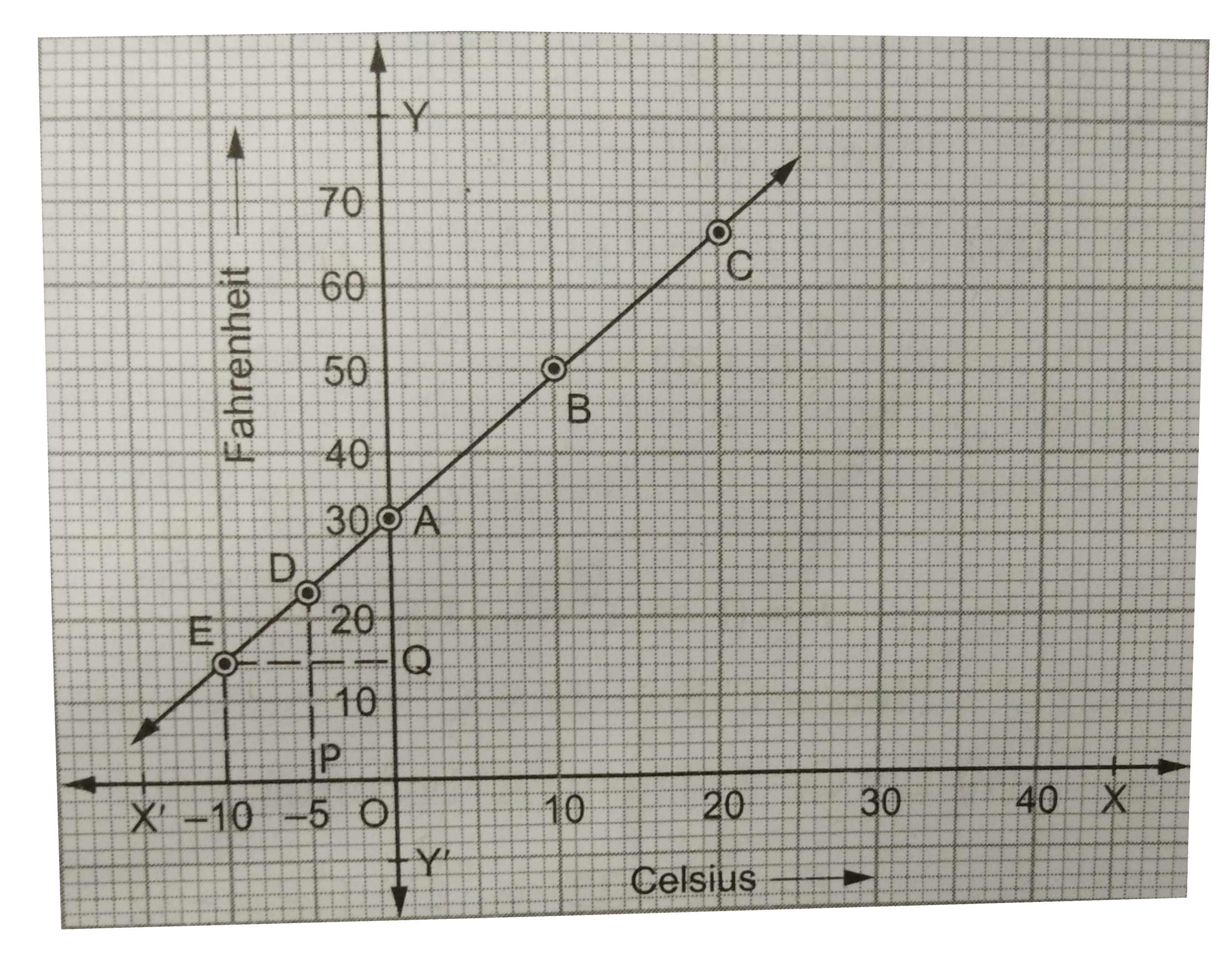InterviewSolution
Saved Bookmarks
| 1. |
There are two scales of measuring the temperature, namely degree Fahrenheit (.^(@)F) and degree Celsius (.^(@)C). The relation between the two scales is given by, F=9/5C+32. (i) If the temperature is 0^(@) C, what is the temperature in Fahrenheit? (ii) If the temperatureis 50^(a) C, What is the temperature in Fahrenheit ? (iii) If the temperature is 50^(@)C, what is the temperature in Fahrenheit ? (iii) If the temperature is 86^(@)F, what is the temperature in Celsius ? (iv) If the temperature is 0^(@)F, what is the temperature in Celsius ? (v) Find the numerical value of the temperature which is the same in both the scales. (vi) Draw the graph of the linear equation F= 9/5C + 32, taking C along the x-axis and F along the y-axis. (vii) Using the graph, fill in the blanks given below: -5^(@)C=(......)^(@)F and 14 ^ (@) F = (......) ^(@) C. |
|
Answer» Solution :The given relation is `F=9/5 C+ 32.""` …(A) Putting C= 0 in (A), we get `F=(9/5 xx0)+32 = (0+32) = 32.` `:. C=0 rArrF=32.` Hence, `0^(@)C= 32^(@) F.` (ii) Putting C=50 in(A) , we get `F=(9/5 xx 50) + 32 = (90 +32)=122.` `:. C= 50 rArr F = 122.` Hence, `50^(@) C= 122^(@)F.` (iii) Putting F= 86 in(A) , we get `9/5C+32 = 86 rArr 9/5 C = ( 86-32) = 54` `rArr C = ( 54 xx 5/9) = 30.` `:. F= 86 rArr C= 30.` Hence, `86 ^(@)F = 30^(@)C.` (iv) Putting F= 0 in (A) , we get `9/5 C+ 32 = 0rArr 9/5 C = -32` `rArr C=(-32 xx 5/9)= -160/9 = -17.8.` `:. F=0 rArr C = - 17.8.` Hence, `0^(@)F = - 17. 8 ^(@) C.` (v) Let C= F. Then, (A) becomes `F=9/5 F + 32 rArr ( 9/5 - 1) F = -32` `rArr 4/5 F = -32 rArr F = (-32 xx 5/4) = -40.` `:. C = F= -40.` Hence, `-40^(@)C = -40^(@) F.` (vi) We have, `F=9/5 C + 32.""` ...(A) Putting C= 0 in (A), we get `F=(9/5 xx0) + 32 = ( 0+ 32) = 32.` Putting C=10 in (A) , we get `F=(9/5 xx 10) + 32 = ( 18+ 32) = 50.` Putting C= 20 in (A), we get `F= (9/5 xx 20 ) + 32 = ( 36 +32) = 68.` Thus, we have the following table. `{:(C,0,10,20),(F,32,50,68):}` On agraph paper, we take C along the x-axis and the corresponding values of F along the y- axis. We plot the points `A(0,32),B(10,50) and C(20,68)` on this graph paper. Now, we join the points A, B, and B, C to get a line ABC, which we extend in both the direction to get the required graph of the givenequation, as shown below.  (vii) On the x-axis, we take a point P at which C=-5. From P, draw `PD bot X'OX`, meeting the line ABC at a point `D(-5,23).` `:. -5^(@)C=23^(@)F.` On the y-axis, take a point Q at which F= 14. From Q draw Q||x-axis, meeting the line ABCD at the point `E(-10, 14).` Hence, `14^(@)F = -10 ^(@) C.` |
|